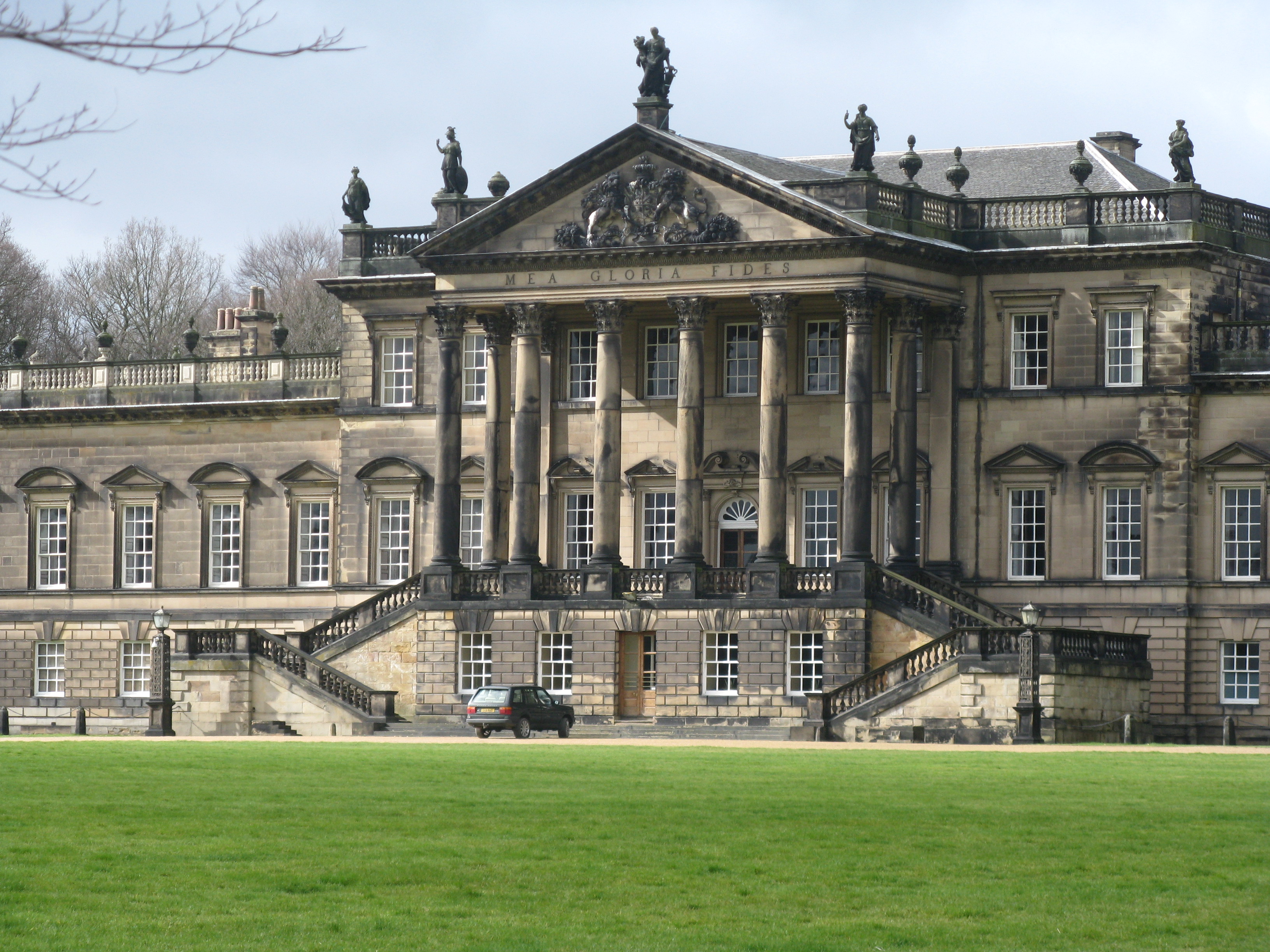John Carr (1723–1807), a prolific architect who worked mainly in the North of England, was born in Horbury near Wakefield in the West Riding of Yorkshire on 28 April 1723. Over his long career he worked as bridge master for the West and North Ridings of Yorkshire and his major commissions included Harewood House, Wentworth Woodhouse and Buxton Assembly Rooms.
After moving to York, Carr was Lord Mayor of York twice. Many of his buildings are recognised by Historic England as being of national and international importance, including the church that he financed and built in his home town, and where he is interred in the vault.
Early life
John Carr’s father, Robert Carr was a quarry owner, mason and bridge master and his mother was Rose Lascelles. The oldest of nine children, Carr was baptised in May 1723 in the old chapel in Horbury. He possibly had a grammar school education after which he started work for his father who probably trained him as a stonecutter and later he worked for him as a building contractor.[1] In 1746 he married Sarah Hinchcliffe, a servant who he probably met while working at Bretton HallCountry house on the north slope of the valley of the River Dearne in West Bretton near Wakefield, West Yorkshire, England. , and by 1752 they had moved to York where his reputation was subsequently made.[2]
Career
Carr was a largely self-taught architect who served no apprenticeship, but he was well read, studying the works, amongst others, of Sebastiano Serlio and Andrea Palladio. He built Huthwaite Hall to his own designs in 1748, and had started his practice by 1750. In the 1750s he was employed as clerk of works at Kirby Hall near Boroughbridge, which was designed by Lord Burlington, an avid promoter of the Palladian style, and Roger Morris.[3] Carr adopted the Palladian style and remained true to its principles throughout his career. Kirby Hall, of which only one wing survives, was illustrated in Vitruvius Brittanicus, a folio of engravings of classical Palladian buildings that influenced architecture in Britain in the second half of the 18th century.[3][4]
Carr built the Pikeing Well-House on New Walk in York, and was admitted a freeman of the City after its completion in 1757. He won a competition to build the grandstand at the new Knavesmire racecourse, where his design came to the attention of the local gentry. Charles Watson Wentworth, 2nd Marquess of Rockingham, a leading member of the Whig establishment, became a patron of Carr, who in turn became his political follower and worked for him at Wentworth Woodhouse,[a]Carr received an annual salary at Wentworth Woodhouse from 1763 until his death.[5] its stables, Keppel’s ColumnOne of several follies and monuments erected on the Wentworth Park Estate in South Yorkshire. and the Rockingham MausoleumMonument commissioned by the Earl Fitzwilliam as a memorial to the second Marquess of Rockingham in 1783..[6] Edwin Lascelles started building Harewood House to Carr’s design in 1759, employing the finest craftsmen of the time; the interior was designed by Robert Adam.[7] Carr also designed the Crescent in Buxton for the 5th Duke of Devonshire. Built between 1780 and 1789, it contained two hotels, one including the Assembly Rooms, and six lodging houses.[8]
Carr designed the first Leeds General Infirmary that was built between 1768 and 1771 near City Square. The two-storey hospital opened with 27 beds but was extended with a third floor in 1792 and could cater for 108 patients.[9] His largest commission was to design the enormous San Antonio Hospital in Opporto, Portugal through Yorkshire connections in the wine trade. It was built by local labour and there is no evidence that he visited.[10]
Through his political and social connections Carr built a network of clients. He became a magistrate for the city of York, and was Lord Mayor of York in 1770 and 1785. He was well placed to win commissions such as Newark Town Hall, the York County Lunatic Hospital, York Assize Courts, and he twice surveyed and repaired York Minster.[2] From the house and office he built for himself in Skeldergate, Carr’s commissions included country houses, town houses, churches, stables, gate lodges, and follies and ornamental buildings.[11]
As a consequence of Carr’s appointment as bridge master in the West Riding of Yorkshire in 1760, and as principal surveyor of bridges in the North Riding, for which he was paid £100 a year from 1772, he built and repaired numerous bridges, many of which survive today. His bridges include the three-arched, balustraded bridgeHistorically important crossing over the River Aire in North Yorkshire, designed by John Carr. carrying the old Great North Road over the River Aire at Ferrybridge (1897), the bridge over the Swale at Richmond (1788–1789) and numerous others.[2] Carr gave up his North Riding surveyor post in 1803 but emerged from retirement to design the bridge over the River Tees at Yarm that was completed after his death.
Carr retired to Askham Richard, near York, where he had purchased the Askham Hall estate. He died there on 22 February 1807, leaving a substantial fortune, and was buried in the vault at St Peter’s ChurchActive Anglican church in the diocese of Wakefield, usually known as St Peter's., which he had designed and financed in his home town of Horbury.[1]
Notes
| a | Carr received an annual salary at Wentworth Woodhouse from 1763 until his death.[5] |
|---|



